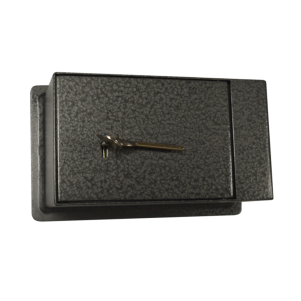Wall safes vs floor safes - which is better for your needs?
Everybody has different possessions, valuables and security needs that are personal to them, and hence has different requirements for a home safe. That is why the range of safes available is so vast. However, perhaps the most popular types of safe for use in the home, are the wall safe and the floor safe. These are very traditional types of safe, but still can vary in size and access mechanism.
Today, wall and floor safes can be accessed using a traditional dial, but also using a keypad with a unique code, or a biometric feature, such as eye, face or fingerprint recognition. This element of choosing the right safe is entirely down to user preference, but when assessing the pros and cons of wall safes versus floor safes there is a lot to consider, so here we have put together an easy guide to help you compare the two.
Understanding what a wall safe and a floor safe is
As two of the most popular types of safe, let’s start by defining what each one is:
- Wall safe – This is a type of safe that is located behind a wall, usually attached to a stud wall mechanism. This is then surrounded by plasterboard but is usually exposed in the wall and then can be concealed by a painting or other wall art, or by a mirror or a clock.
- Floor safe - A floor safe is most often built into a cavity created in a concrete floor, it can then be concealed completely by carpet, flooring tiles or lino. There are variations, known as floorboard safes, which can be attached to wooden floor joists. This is useful where there is no concrete floor, most often on an upstairs floor, so the safe is located in the void between the floor and the ceiling downstairs.
Both these types of safe are more secure than a free-standing safe, because they can be concealed from view to an extent.
What are the differences between a wall safe and a floor safe?
Size – Wall safes tend to be smaller and lighter than floor safes, purely because of the space restrictions of a wall void, and because the wall safe is attached to stud wall constructions, restricting how heavy they can be. This obviously affects what and how much you can store in a wall safe. With a floor safe, in the most part there is no restriction on size and weight, it just depends how big you want to make the floor cavity the safe is encased in.
Security – Although both safes are concealed from view, technically a wall safe is easier to find if you have no prior knowledge of its existence. You simply remove any items on a wall which ‘could’ be concealing it. It is also easier to remove from a stud wall construction, although still a challenge to attempt. With a floor safe, there is no visual clue that it exists, and requires much more time and endeavour to locate. It is unlikely a thief would even think to try, without prior knowledge. A floor safe is also permanently encased in concrete and so can’t be removed as it is effectively part of the house.
Convenience – If you want quick and regular access to your safe, a wall safe is much more convenient. You can reveal it much quicker than having to roll back carpet or flooring, and maybe even remove furniture first. So a floor safe is not ideal for regular use.
Installation – A wall safe is much easier to install, while a floor safe should probably be installed by a professional, to ensure you have the right dimensions and sufficient space. In many cases a floor safe will be installed when a house is built, which of course isn’t an option if you are moving into an existing house and want a floor safe. So floor safes are often inherited when you move into a house, whether you wanted it or not.
Damage – Houses can be prone to flooding and ground floors can attract damp, so it is important that floor safes are waterproof. This can add cost in some cases.
Relocation – If you wanted to take a wall safe with you in the event of moving house, then this is possible and achievable. However, you wouldn’t have the option of taking a floor safe with you, unless it was a floorboard safe on an above-ground floor.
Check out our range of wall and floor safes at MB Direct
So in summary, wall and floor safes mainly differ in size and convenience. If you only want a relatively small safe that is for regular access, then a wall safe is probably ideal. But if you want a large safe for items that you just want to keep secure and rarely need to access, a floor safe might be better. Either way, check out our range of high quality, high security safes at MB Direct and order online today.